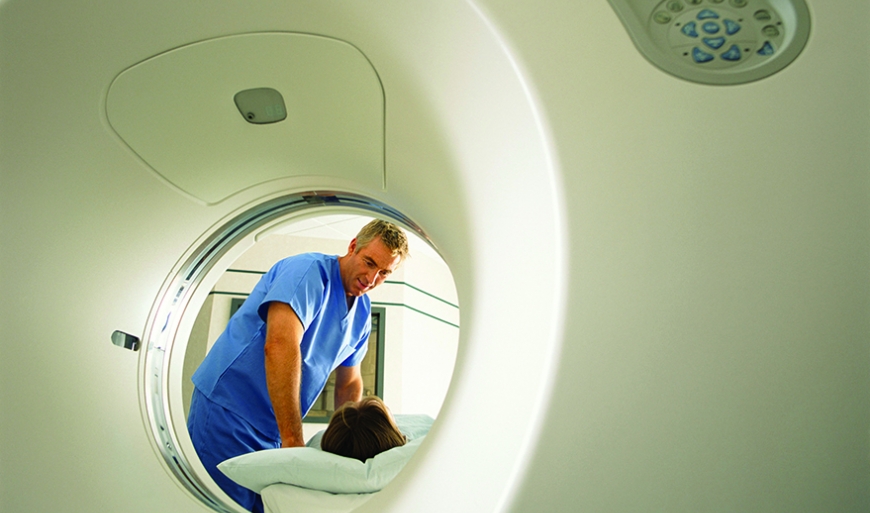Medical Device Shielded from Radiation Without Lead
Global medical device OEM reduces costs and environmental impact

The Challenge
A leading global manufacturer of medical equipment was anticipating a serious regulation change. The European Union’s Restriction of Hazardous Substances (RoHS) eventually would lead to a ban on lead shielding components in equipment like the company’s new line of computed tomography (CT) scanners.
Shielding elements protect sensitive electronic components from degradation due to X-ray exposure during a CT scan. Designs traditionally have required lead parts produced by machining or casting.
To stay ahead of the regulatory curve, the manufacturer's material technology team needed to find a replacement for lead. They wanted an injection moldable material with equivalent radiation shielding performance and the ability to provide uniform shielding with no “hot spots.” Injection molding also would allow the company to eliminate machining and increase productivity and design freedom for components.
The Solution
Working with Reiter-HG Geiger, a sophisticated injection molding processor specializing in demanding applications, the OEM team began their search for a sustainable material to replace lead, one that would effectively shield X-rays up to 140 keV while offering additional manufacturing benefits.
Two application areas were targeted initially: a printed circuit board controller unit and shielding plates for various electronic components linked to each of the numerous detector elements.
The search for a suitable material brought them to Avient. Teams from all three companies worked together to develop new designs based on Trilliant™ Healthcare Radiation Shielding Compound, a high-density, metallic-filled material. The material, a highly filled polymer based on Avient’s Gravi-Tech™ technology, is specifically formulated to address health care industry needs and regulations.
Intensive material evaluation by the OEM showed that Trilliant™ blocked radiation at levels equivalent to those of pure lead. In addition, excellent dispersion of the metallic filler eliminated “hot spots” where radiation could leak out.
The Impact
The three-way collaboration allowed the manufacturer to reduce shielding component costs from 30 to 50 percent due to machining, assembly and regulatory cost reductions versus traditional methods. In addition, the company reduced the health and environmental impact of its equipment by using an RoHS-compliant, eco-conscious and equally effective alternative to lead.
Finally, the material gave the OEM's designers greater geometric flexibility so that they could shield areas more effectively than with machined parts.